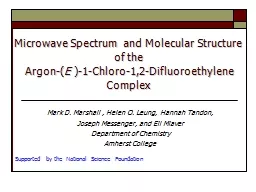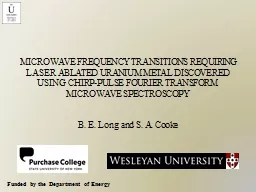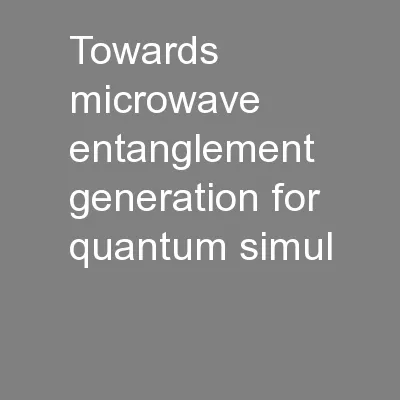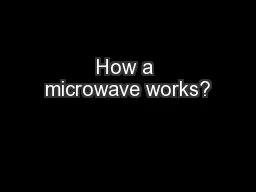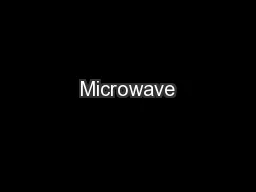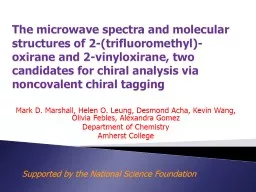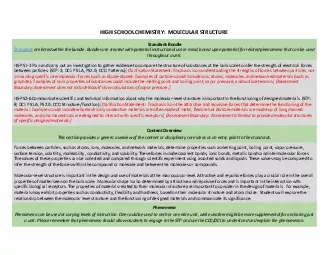PPT-Microwave Spectrum and Molecular Structure of the
Author : trish-goza | Published Date : 2015-12-04
Argon E 1Chloro12Difluoroethylene Complex Mark D Marshall Helen O Leung Hannah Tandon Joseph Messenger and Eli Mlaver Department of Chemistry Amherst College
Presentation Embed Code
Download Presentation
Download Presentation The PPT/PDF document "Microwave Spectrum and Molecular Structu..." is the property of its rightful owner. Permission is granted to download and print the materials on this website for personal, non-commercial use only, and to display it on your personal computer provided you do not modify the materials and that you retain all copyright notices contained in the materials. By downloading content from our website, you accept the terms of this agreement.
Microwave Spectrum and Molecular Structure of the: Transcript
Download Rules Of Document
"Microwave Spectrum and Molecular Structure of the"The content belongs to its owner. You may download and print it for personal use, without modification, and keep all copyright notices. By downloading, you agree to these terms.
Related Documents

